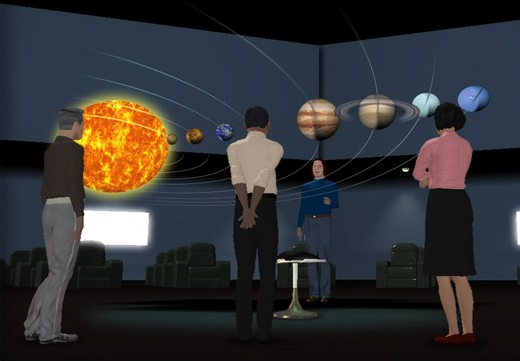So much work seems to take place online these days, and that goes for the practice of facilitation, too. And, each time I facilitate a meeting or mediation online, I further clue into the truth that online and face-2-face facilitation are different beasts. It’s easy to get into trouble when we attempt to port what we do as face-2-face facilitators, to the virtual world.
How online facilitation is different
Here’s 8 ways I see online facilitation differing from face-2-face facilitation, and tips for dealing with those differences:
- Different senses come into play. You know that the majority of what we communicate to others tends to flow through non-verbal channels. Yet, in most online contexts you don’t see the other people in real-time, so verbal and the written word become more important. Get your listening and reading-between-the-lines hats on!
-
Technology is always a barrier. Even if it feels like you’re there (think telepresence), you’re not. Technology is always between you and them. It’s never neutral. Get comfortable using the technology, so you can focus on what’s really important.
-
Feedback comes at a different pace. In the face-to-face world, you can see (usually) when someone is ticked off, disengaged from the process. And, you can respond, if appropriate, in the moment. Well, when online, you may not even be aware that a ‘moment’ is happening. Routinely check-in with the participants.
-
Winging it can be disastrous. Group interactions; plenary, breakouts, games… need to be carefully thought out, online. Its much harder to change the process, online. Better to create a structure that allows you to improvise ‘inside the box’.
-
Real estate is reduced. In a face-to-face meeting, you can look around the room and admire all your work, all those populated flipcharts on the wall. The big picture is always available. In the online, how will you look around? Keep going back to the big picture, and summarize progress-to-date. Iterate.
-
Some content works better than other. The online world lends itself to facts, over interpretations.
-
Relationships and trust. A record of our interactions, positive and negative, takes on a different meaning, online. An ephemeral comment made in a face-2-face session, can become permanent, when left in an online chat session. Agree up-front, how these revelations will be dealt with; e.g., confidentiality.
-
Administrative clarity. In a face-2-face session, we are all together, literally. We are physically present, see the same agenda, and can respond as a group, to the situation at-hand. In the online, we are likely all in different locations (and timezones), may be working from at a different agenda! (think multi-tasking), and generally, need to be corralled, before we act as a group. Become an expert in seeing the agenda, content… from their perspective.
What other ways do you see at the core of how online and face-2-face facilitation differ? Chime in…


Speak Your Mind